Doll Dressed, Female Item Number: E90036-0 from the National Museum of Natural History

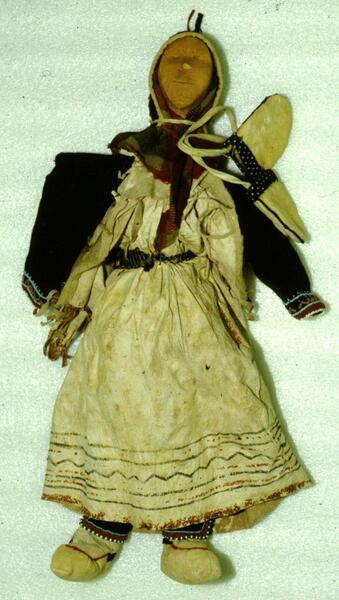
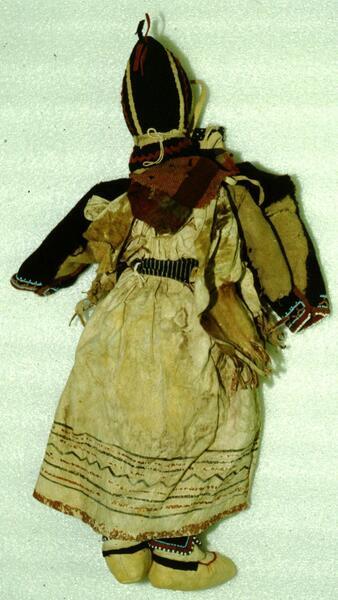
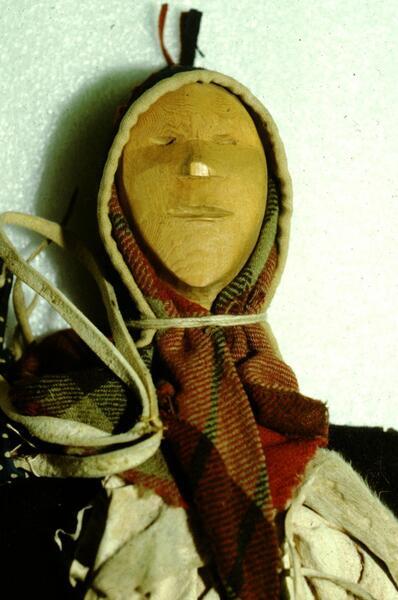
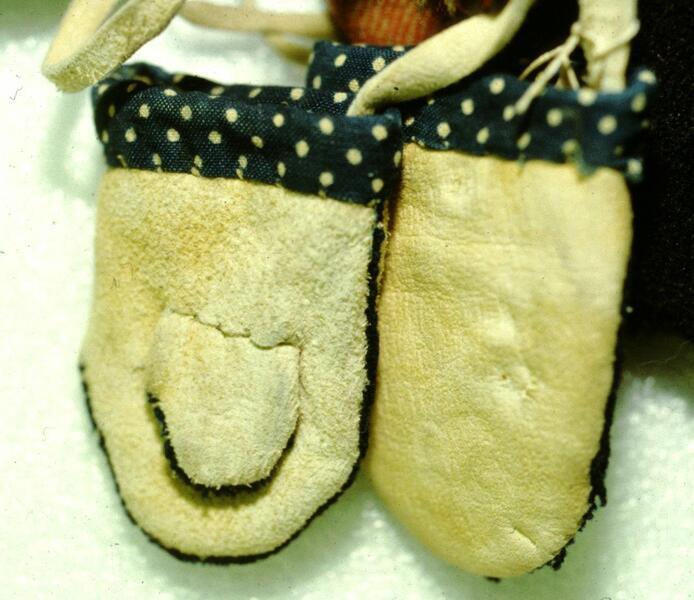
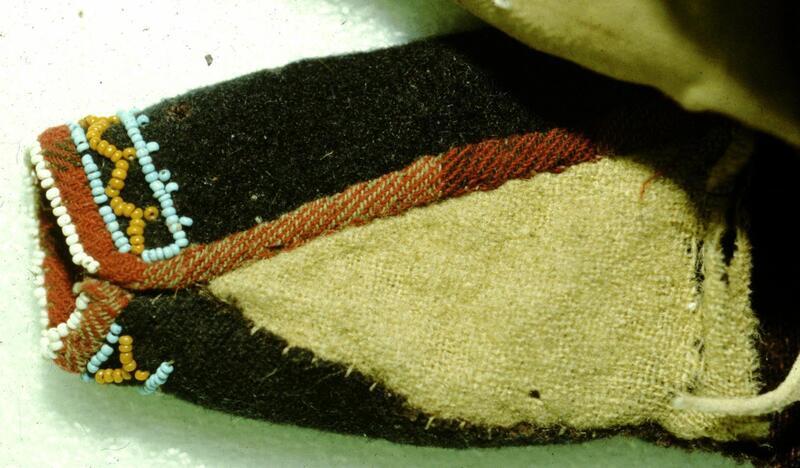
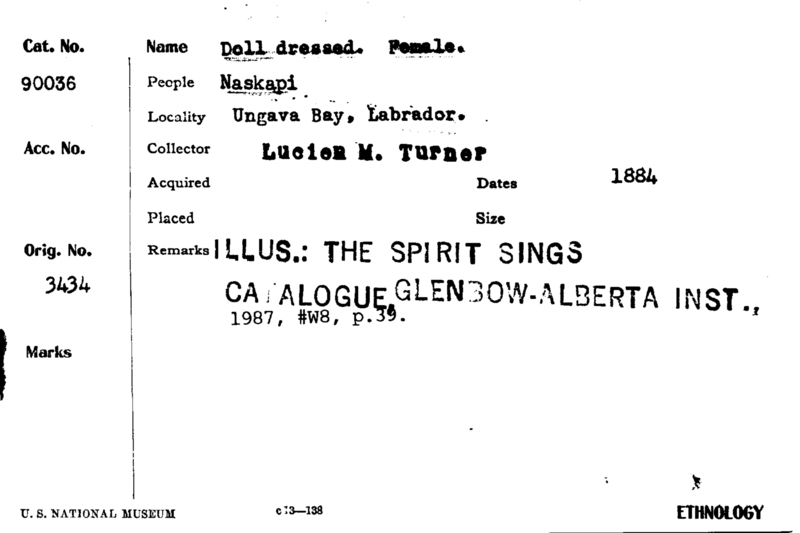
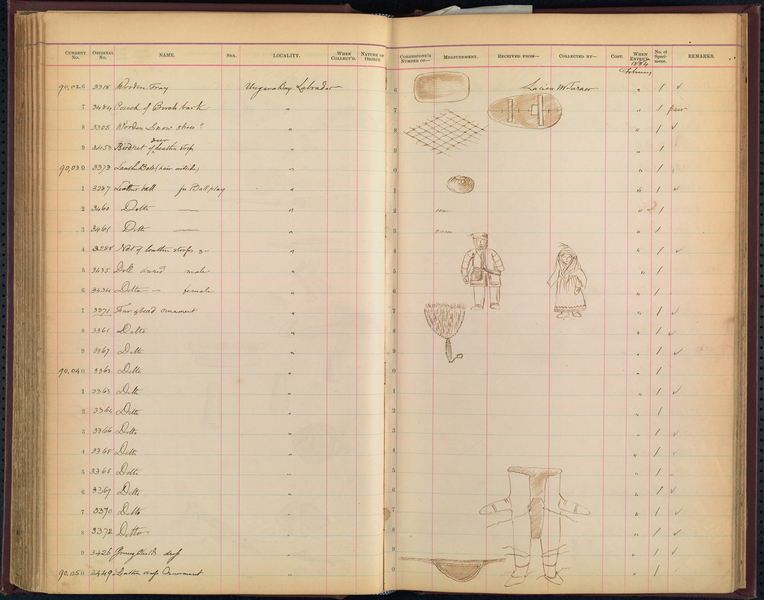
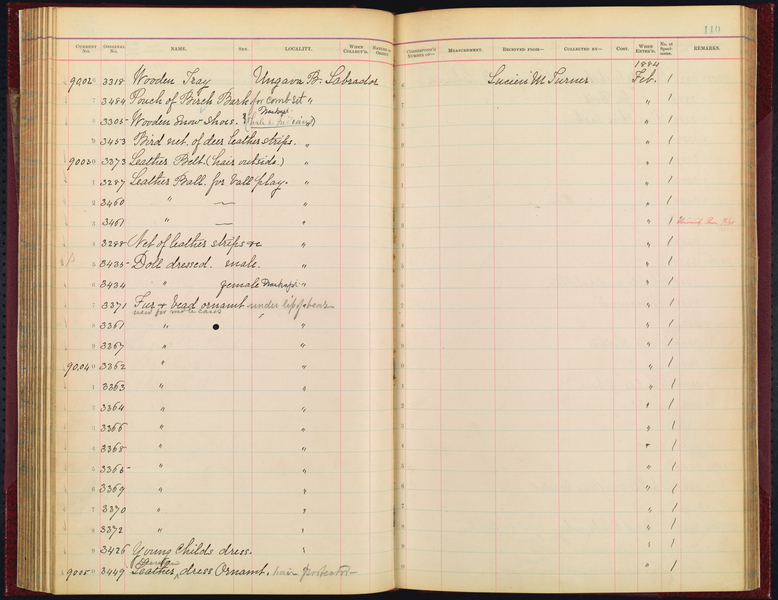
Notes
From card: "Illus.: The Spirit Sings catalogue, Glenbow-Alberta Inst., 1987, #W8, p. 39."Illus., with male doll E90035-0, in Fig. 1, p. 56, and discussed p. 62, in Oberholtzer, Cath, 2011, "Made for Trade: Souvenirs from the Eastern Subarctic," American Indian Art Magazine, 36(2). Identified there as male and female dolls, collected between 1882 and 1884 from Kuujjuaq (formerly Fort Chimo), Ungava Bay region, Quebec, by Lucien Turner, who identified the female doll as Nenenot (Naskapi). Oberholtzer identifies the dolls as Cree, and notes that "While Turner was there [at Fort Chimo], a number of Cree families from Fort George and Little Whale River traveled there to hunt ... . Turner's extended stay in the area and the Cree presence gave him an opportunity to collection Cree items, including dolls. ... Their cloth bodies are stuffed, perhaps with caribou hair, and their heads are carved wood. Only the male of the pair has bead eyes. He wears a fitted, painted caribou-hide coat, wool cloth leggings (which lack the pointed ankle projection) and a pillbox hat with a head scarf tied beneath it. The female's dress is of painted fetal caribou skin, sewn with the fur inside; it is cinched at the waist by a cotton sloth belt fastened at the front with sinew. The separate sleeves, straight-cut leggings and hood are navy wool cloth. The hood is lined with green tartan and is worn over a tartan shawl tied over the head and around the shoulders. Both dolls have hide mittens trimmed with cloth and high-cut hide moccasins. Worthy of note are the male's two bags: a round-bottomed cartridge bag is hung over his left shoulder and rests on his right hip; and a drawstring gathered panel bag is tied to the belt on his left side. The fur-lined dress and additional layers - a scarf for the man and a shawl for the woman worn beneath their headgear - may be indicative of winter wear."Illus. Fig. 42 p. 167 in Willmott, Cory. (2021). Decolonizing the Museum to Reclaim and Revitalize the Anishinaabe Strap Dress. Winterthur Portfolio. 55. 121-185. 10.1086/719710.
Item History
- Made in Quebec, Canada
- Collected by Lucien M. Turner in Quebec, Canada
- Received on January 9, 1884
What
- Name
- Doll Dressed, Female
- Identification Number
- E90036-0
- Type of Item
- doll
Who
- Culture
- Innu, Naskapi ? and Cree ?
- Field Collector
- Lucien M. Turner
Where
- Holding Institution
- National Museum of Natural History
- Made in
- Quebec, Canada
- Collected in
- Quebec, Canada
When
- Acquisition Date
- on January 9, 1884
Other
- Accession Number
- 013922